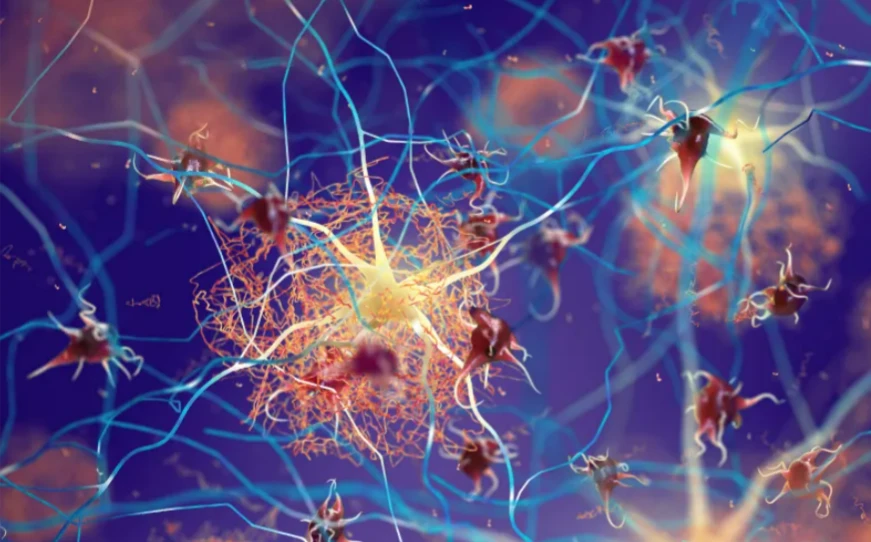The lack of 2 proteins that cause the death of brain tissue would be one of the explanations for why the “super-elderly” do not have memory problems
Eternal youth -along with the vitality and intellectual acuity associated with a young brain- is a universal desire that has materialized in recurring concepts such as the Holy Grail or the philosopher’s stone.
Beyond this human longing, the existence of the so-called “super-elderly” represents a challenge and an opportunity to understand the root of brain health and healthy aging.
Octogenarians with fifty-year-old brains
Superelders are people over the age of 80 who retain physical and cognitive characteristics of an adult 20 to 30 years younger. What makes them so resistant to brain deterioration?
Recent investigations have revealed new knowledge about the molecular and cellular mechanisms that could be involved in the inevitable and irreversible aging process.
Going deeper into the genetic mechanisms of longevity and its manifestation in organisms (phenotype) has allowed us to focus on life habits (diet, exercise, cognitive activity, etc.) as key factors that tip the balance towards healthy aging or pathological. The phenomenon that allows us to modify our genetic destiny is epigenetics.

Studies have proven that it is false that the brain loses the ability to regenerate with aging.
Epigenetic mechanisms are chemical modifications in DNA that are produced by changes in the environment (physical or cognitive) and that modulate the expression of our genes.
So our supposed destiny in the form of genetic information can be rewritten -just as we punctuate a text- by the actions of our daily lives. And, in addition, they can be inherited by our descendants. But let’s see what happens to our brain throughout life.
A slow maturing organ
Unlike other species, the human brain must still develop after birth. It is a slow process, which begins at conception and does not stop until death, although it reaches maturity approximately between 20 and 24 years of age.
As we know, our thinking organ is made up of interconnected neurons and other nerve cells that support and defend it (astrocytes and microglia).
We have about 10 trillion neurons that function as a great network of information, storage and management of our daily lives. Guaranteeing its precise integrity of protection and regeneration mechanisms.
Until a few years ago it was thought that, once brain maturity was reached, there were no mechanisms to replace neurons and repair lost connections. Nothing could be further from the truth: today we know that the brain has specific areas (niches) where progenitor cells (stem cells) can help repair or replace neurons that degenerate or have been damaged.
The existence of protective mechanisms does not prevent these parent niches from replenishing neurons with age. Therefore, the brain of an older person has less capacity for regeneration, which translates into a decrease in cognitive capacity.
In any case, people only usually suffer severe cognitive impairment when the loss of neurons is very high due to a degenerative disease, such as Alzheimer’s.
What is surprising is that this inexorable loss does not lead to serious alterations in the quality of life of the superelderly, which increases their resilience and cognitive reserve.
We call cognitive reserve the ability of our central nervous system to balance and optimize its functioning to face neurodegenerative pathologies. This faculty is also associated with factors such as intellectual activity: reading, writing or socializing.
Where does the super-power of the super-elders come from?
It seems that the super-elderly share similar habits: they stay physically active, they tend to be positive, they challenge their brain and they learn something new every day. Many continue working into their 80s.
Additionally, scientific evidence highlights the importance of staying socially engaged as we age. Activities such as visiting family and friends, volunteering with an organization, and going out to different events have been associated with better cognitive function.
And on the contrary: a low social participation in advanced ages implies a greater risk of dementia. These facts validate the idea that the environment is a major player in our aging.
All of the above would explain why neural degeneration does not occur in the super-elderly -or at least not at the rate typical of an elderly person- and they maintain the cognitive abilities of a person 20 or 30 years younger.
The discovery of superneurons also raises the question of whether we can favor their appearance during neurodevelopment or in childhood. The coincidence of both facts, the practice of healthy social habits and the existence of exceptional nerve cells, opens the door to having some influence on our inherited genes through epigenetic changes.
It would also be of interest to know if XL neurons could constitute -by presence or absence- a marker of Alzheimer’s and other dementias, both of their progression and of the response to therapies. And, finally, if they would serve as a target to find new treatments.

